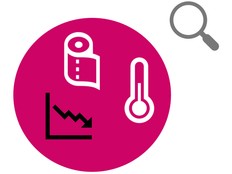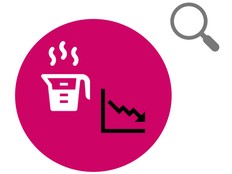ステップ 1: 準備
説明
トーチと 2 台の BBC micro:bit を使って、物質が透明か、半透明か、不透明かを調べます。
このプロジェクトは、理科教師向けに White Rose Science と共同で開発されたもので、学生が物質の特性や、光線の進路上に物体を置いた場合の効果について学べます。 また、コンピュータプログラムにおけるシーケンス、変数、ループの使い方についても学べます。
この動画は、プロジェクトの仕組みと実験の方法について説明します。
動作の仕組み
- 両方の micro:bit で同じプログラムが使用されます。
- 1台のmicro:bitは箱に入れ、もう1台は手元に残します。
- 箱の開口部を試験対象の各種物質で覆い、物質にトーチをあてて光を照射します。
- 箱の中のmicro:bitが物質を透過する光を測定し、その測定値を無線で手元のmicro:bitに送信します。
- 手元にあるmicro:bitが明るさの測定値を表示します。
- 測定値の範囲は0(完全な暗闇)から100(非常に明るい)です。 低い数値は不透明であることを示し、高い数値は透明であることを示します。
必要なもの
- トーチ
- 細長い箱、紙コップ、または蓋を外したボール紙の筒
- テスト用の物質(紙、気泡緩衝材、フェルト、透明プラスチック製ファイルなど)、それぞれ箱の開口部を覆うのに十分な大きさのもの
- 2 台の micro:bit
- 少なくとも1つの、新しい電池が入ったバッテリーパック
ステップ 2: 調査
- hexファイルをダウンロードし、両方のmicro:bitにプログラムを読み込みます。 この実験では、このプロジェクトのプログラムを自分で書く必要はありません。ただし、プログラミングに興味がある場合は、下の「ステップ3:プログラミングする」セクションをご覧ください。
- 少なくとも1つのmicro:bitにバッテリーパックを取り付けます。 バッテリーパック付きのmicro:bitを箱の底に入れ、LEDが上を向くようにします。 バッテリーパックはmicro:bitの下に置き、光を遮らないようにします。
- トーチを点け、箱の中ではなく開口部にあてます。 手元のmicro:bitのボタンBを押して、箱の底の明るさレベルを測定します。 測定値を記録します。 精度を上げるため、テストを3回実施し、平均値を算出してください。 これは調整数値であり、あくまで参考値に留まります。使用するトーチの強度によって、最大照度測定値は異なるからです。
- 次に、実験対象の物質を箱の先端の上に置きます。 トーチを箱に対して以前と同じ位置に保ち、物質に光りをあてます。 ボタンBを再度押し、表示された測定値を記録します。
- 他の物質でも同様に繰り返します。
- 結果を比較してください。 予想通りでしたか?
ヒント
- この調査は、測定中にトーチと物質を同時に持つことが難しいため、他の人と一緒に行うことをお勧めします。
- 調査中に予期しない0の計測値が表示された場合は、バッテリーパックを取り外して接続しなおすか、micro:bitの背面にあるリセットボタンを押してください。
- 物質によっては、micro:bitが検知できない量の光が透過する場合があります。 最適な結果を得るには、トーチを物質サンプルに押しあててください。
- 2桁の数字がmicro:bitのLEDディスプレイにスクロール表示されます。 実験の前に、学生に表示された数字を読み取る練習をさせてください。
この実験を授業やプログラミングクラブで行う
この実験を授業やプログラミングクラブで行う場合、micro:bitの各ペアを、それぞれ別の一致する無線グループ番号にする必要があります。 これにより、受信側micro:bitがペアとなった送信側micro:bitからの測定値を適切に受け取れるようになります。
Microsoft MakeCodeでプロジェクトを開き、無線セットグループブロックに固有の番号を入力します。その後、そのhexファイルを2台のmicro:bitにダウンロードします。 輪ゴムを使ったり小さな袋に入れたりして、2 台の micro:bit がバラバラにならないようにします。 授業で使用するすべてのmicro:bitのペアに同じ作業を繰り返します。
ステップ3:プログラミングする
このプロジェクトのプログラミング方法については、次の動画をご覧ください:
このプロジェクトのコードを修正したい場合は、下のいずれかのボタンをクリックしてください:
This content is published under a Creative Commons Attribution-ShareAlike 4.0 International (CC BY-SA 4.0) licence.



